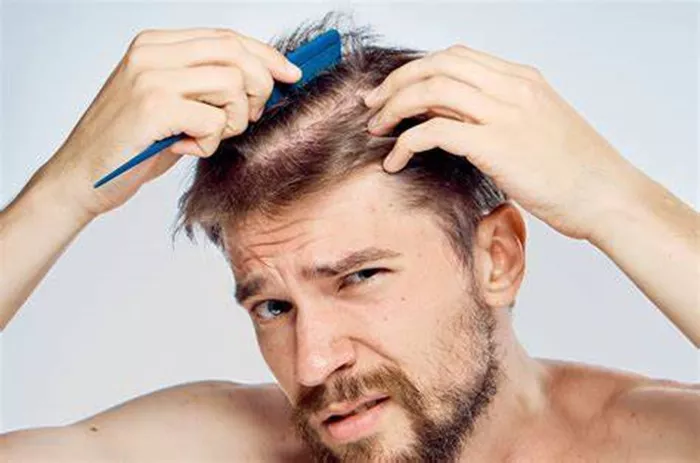A thinning hairline is one of the most common hair loss concerns, affecting both men and women as they age. While it’s often associated with male pattern baldness, it can happen to anyone due to various factors, including genetics, hormonal changes, stress, and medical conditions. Recognizing the early signs of a receding or thinning hairline is crucial for taking proactive steps to manage or slow down the process.
The Early Stages of a Thining Hairline
The first signs of a thinning hairline can be subtle and easy to miss if you’re not paying close attention. Many people notice changes in the way their hair falls or how their scalp becomes more visible under certain lighting conditions.
One of the earliest indicators is a slight recession at the temples. For men, this often begins with the hairline moving backward in an “M” shape, where the corners near the forehead start to thin before the rest of the hairline. Women, on the other hand, typically experience diffuse thinning across the entire hairline rather than a receding pattern.
Another early sign is increased hair shedding. You might find more hair than usual on your pillow, in the shower drain, or on your hairbrush. While losing 50 to 100 hairs a day is normal, excessive shedding could signal the onset of a thinning hairline.
Visible Changes in Hair Density
As hairline thinning progresses, the changes become more noticeable. The hair around the forehead and temples may appear wispier, with shorter, finer strands that don’t grow as long or as thick as they once did. This is due to miniaturization—a process where hair follicles shrink over time, producing weaker, thinner hairs before eventually stopping production altogether.
When examining your hairline under bright light, you may see more scalp than before. This is especially apparent when your hair is pulled back or wet, as the contrast between hair and scalp becomes more pronounced. Some people also notice that their hair doesn’t style the way it used to—styles that once looked full and voluminous now appear flat or sparse.
Advanced Thinning and Recession
In later stages, the hairline recession becomes more severe. For men, the “M” shape deepens, and the middle section of the hairline may also start to thin, leading to a more pronounced widow’s peak. Eventually, the thinning can extend to the crown, creating the classic male pattern baldness look.
Women with advanced thinning may see their part widening or their ponytail becoming noticeably thinner. Unlike men, female hair loss rarely leads to complete baldness, but the hairline can appear significantly more sparse, making the scalp much more visible.
Psychological and Emotional Impact
Beyond the physical changes, a thinning hairline can have a profound emotional effect. Many people associate a full head of hair with youth and vitality, so noticing hair loss can lead to decreased self-esteem and confidence. Some individuals may avoid social situations, change their hairstyles to cover thinning areas, or even experience anxiety about further hair loss.
It’s important to address these feelings and understand that hair thinning is a natural part of aging for many people. Seeking support from friends, family, or professionals can help manage the emotional toll.
Possible Causes of a Thinning Hairline
Hair thinning doesn’t happen for just one reason—multiple factors can contribute to the problem.
Genetics
The most common cause is androgenetic alopecia, or pattern hair loss, which is hereditary. If your parents or grandparents experienced thinning hair, you’re more likely to as well.
Hormonal Changes
Fluctuations in hormones, such as those during pregnancy, menopause, or thyroid disorders, can trigger hair loss. In men, dihydrotestosterone (DHT), a byproduct of testosterone, binds to hair follicles and causes them to shrink over time.
Stress and Lifestyle Factors
High stress levels, poor nutrition, and lack of sleep can accelerate hair thinning. Telogen effluvium is a condition where stress pushes hair follicles into a resting phase, leading to increased shedding.
Medical Conditions and Treatments
Certain illnesses, such as alopecia areata, scalp infections, or autoimmune diseases, can cause hair loss. Additionally, treatments like chemotherapy or certain medications may lead to temporary or permanent thinning.
How to Address a Thinning Hairline
While some causes of hair thinning are irreversible, early intervention can slow down the process and even restore some hair growth.
Medical Treatments
Minoxidil (Rogaine) and finasteride (Propecia) are FDA-approved treatments for hair loss. Minoxidil works by stimulating hair follicles, while finasteride blocks DHT production in men.
Lifestyle Adjustments
Eating a balanced diet rich in vitamins (like biotin, iron, and zinc) and reducing stress can improve hair health. Avoiding tight hairstyles and excessive heat styling can also prevent further damage.
Cosmetic Solutions
For those looking for immediate results, hair fibers, scalp concealers, and strategic haircuts can create the illusion of thicker hair. In more advanced cases, hair transplants or wigs may be considered.
When to See a Doctor
If you notice sudden or patchy hair loss, itching, or pain, it’s best to consult a dermatologist. They can diagnose underlying conditions and recommend personalized treatments.
Conclusion
A thinning hairline is a common but often distressing experience. Recognizing the early signs and understanding the causes can help you take control of the situation. Whether through medical treatments, lifestyle changes, or cosmetic solutions, there are ways to manage hair thinning and maintain confidence in your appearance. The key is to act early and seek professional advice when needed.
Related Topics:
Excessive Hair Loss: Causes & Treatments
8 Best Treatments for Alopecia in 2025
7 Best Mild Shampoos for Hair Fall


